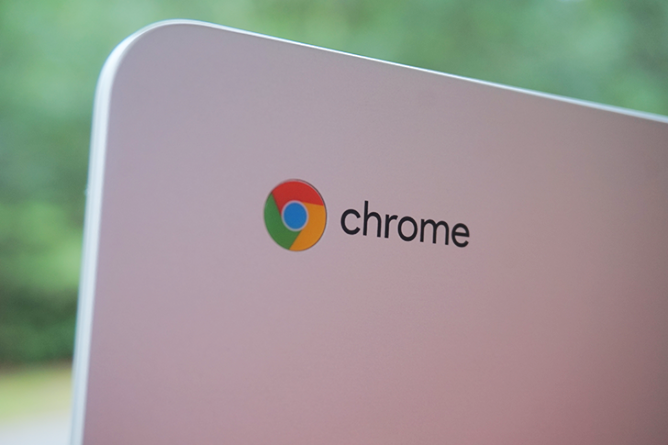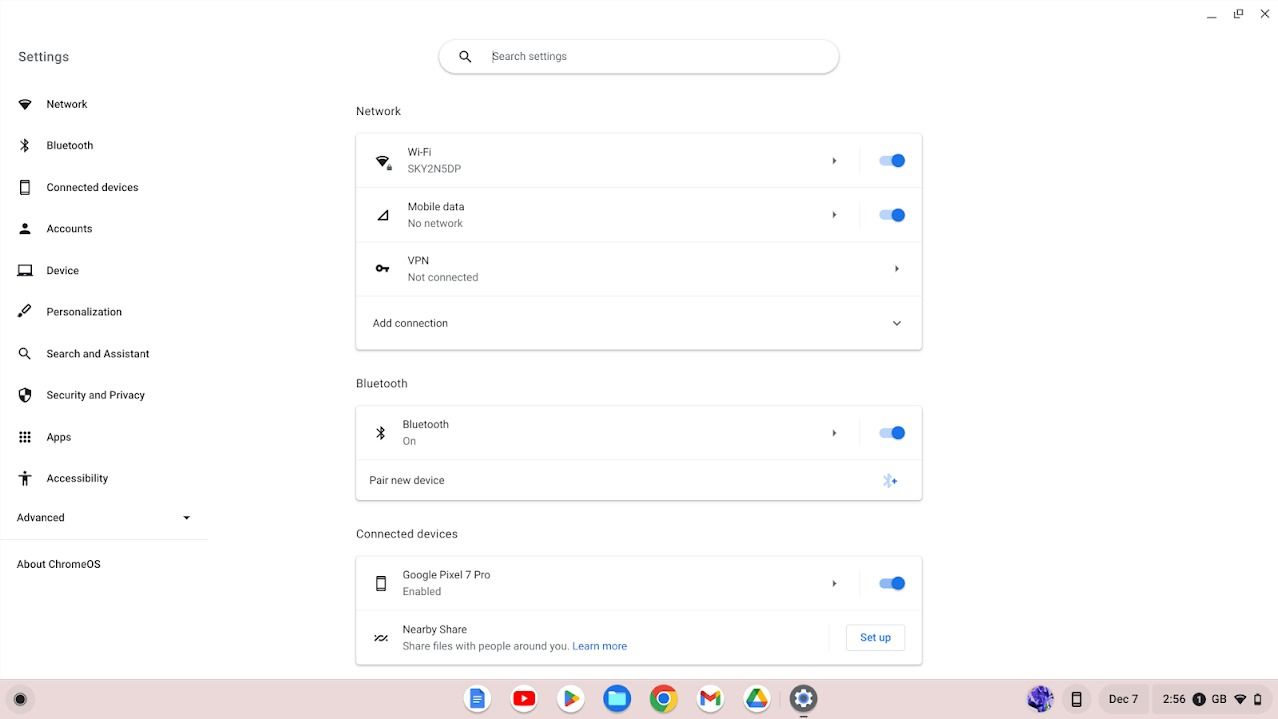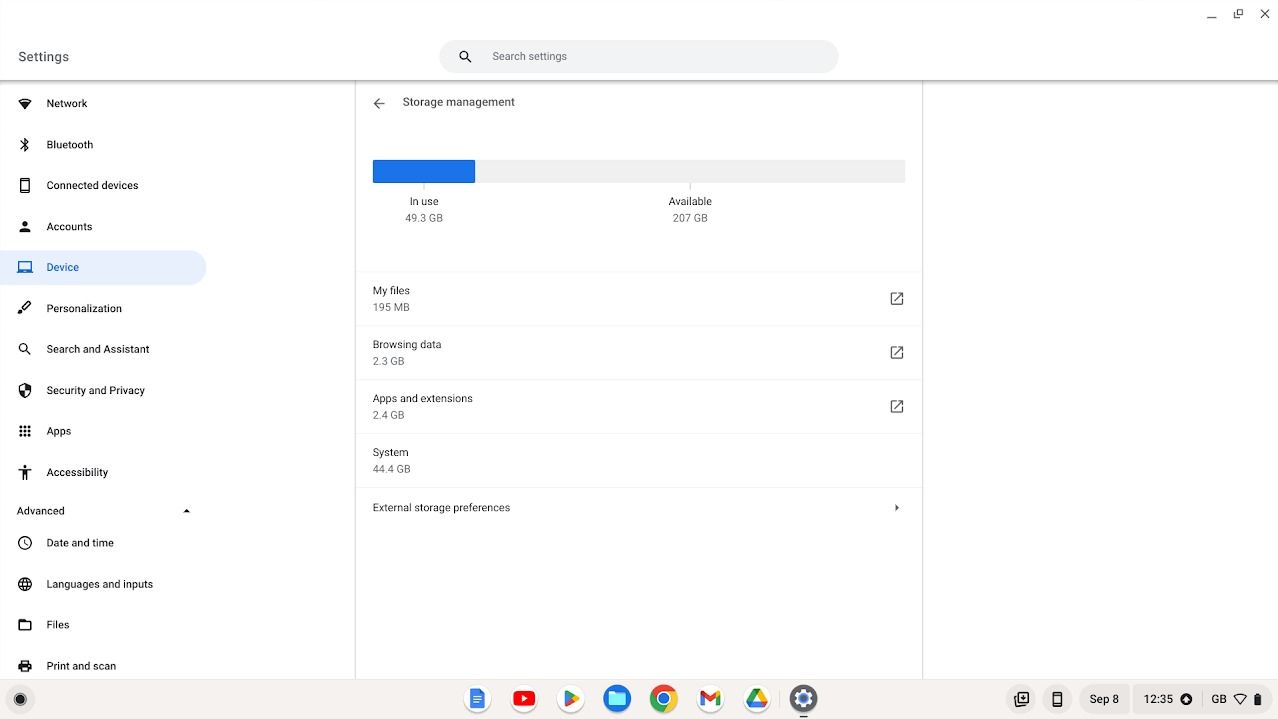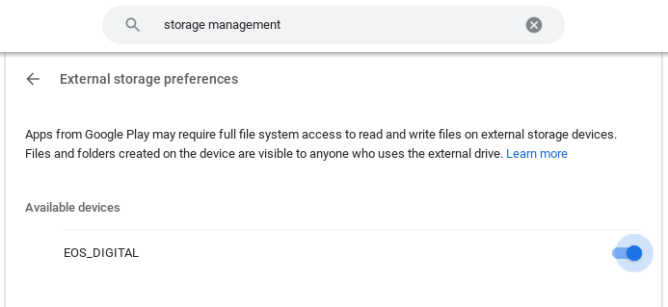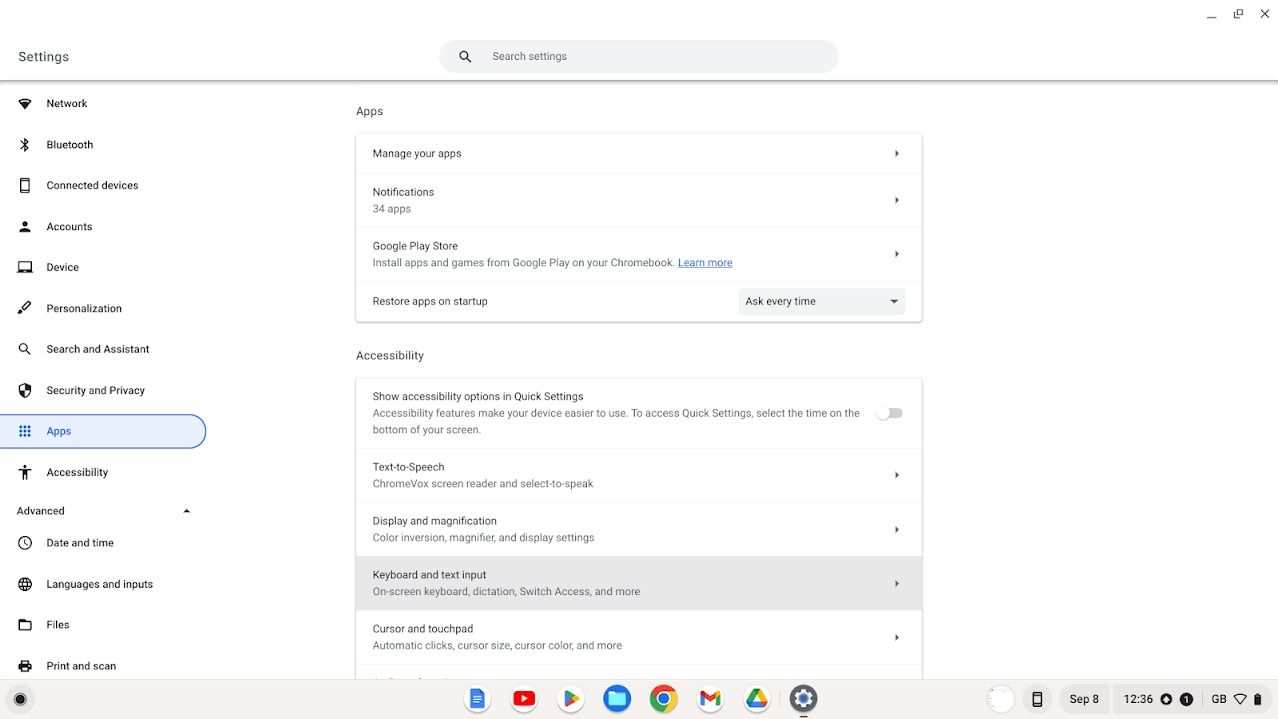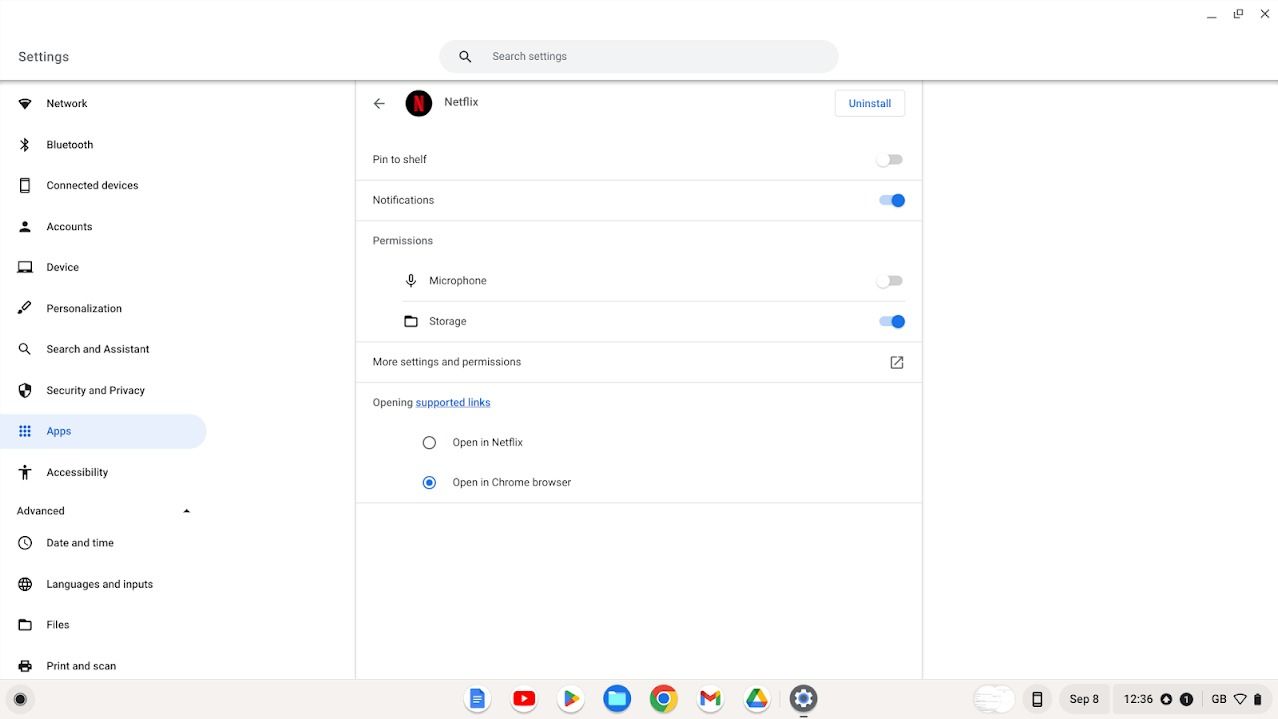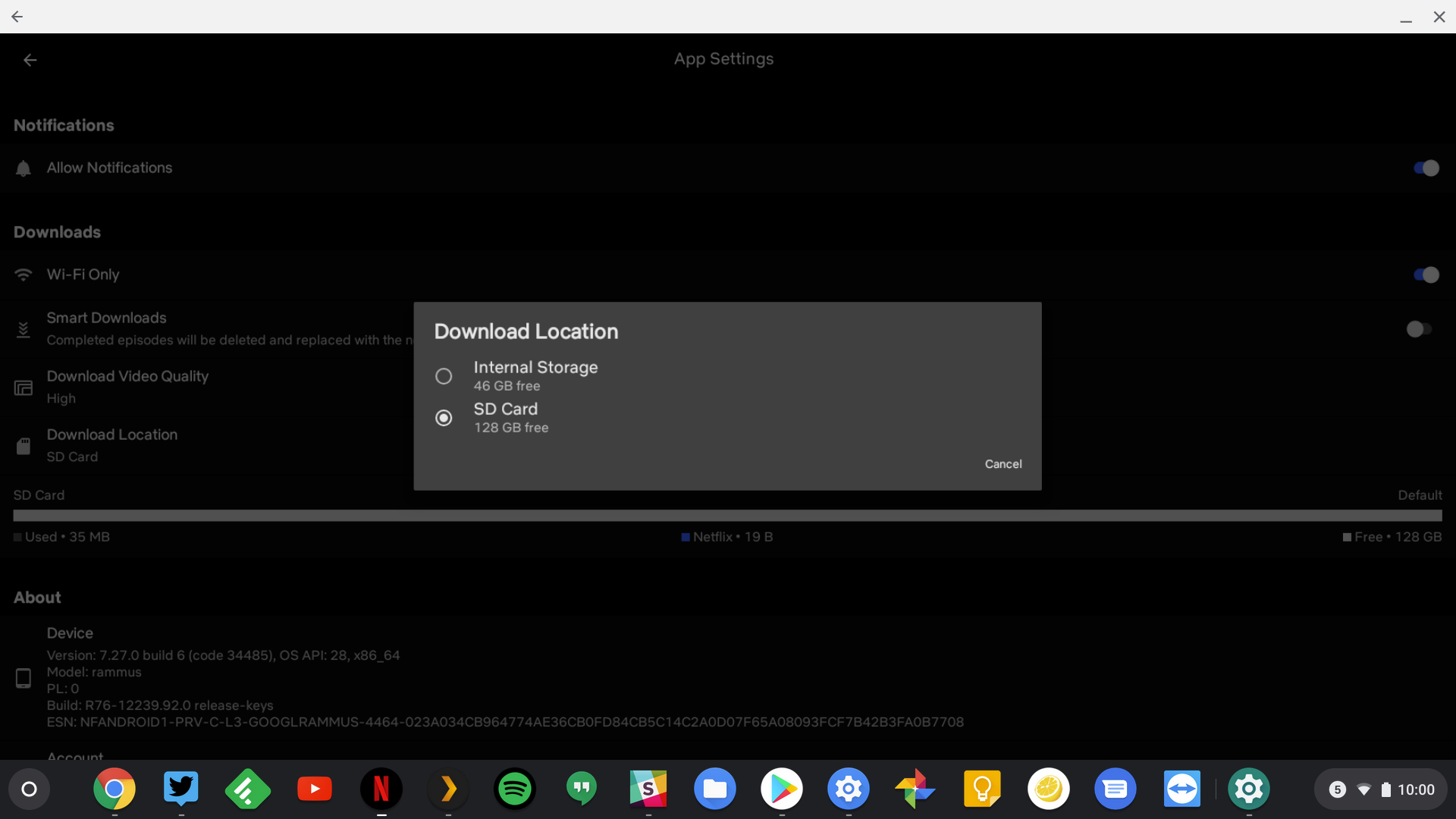Whether you're rocking a top-of-the-line Chromebook or our favorite budget ChromeOS devices, at some point, you may want to expand your storage. Downloading content from apps like Netflix or Plex takes up a lot of space, so you'll want to install an SD or MicroSD card to avoid filling up your laptop's internal storage.
Unlike devices like Android phones and tablets, most Chromebooks offer an SD card slot for easy storage expansion. This is the best alternative to a cloud storage option like Google Drive, as you don't need Wi-Fi or mobile data to access your files. We walk you through how to force apps to use your Chromebook's SD card storage so that you can download all the content you want.
How to install an SD card on a Chromebook
Your Chromebook either has a microSD or full-size SD card slot. Don't worry if yours only has an SD card slot. You can still use the smaller variant with a microSD to SD card adapter. We recommend choosing the highest-speed microSD card you can find, as video playback may stutter otherwise. This shouldn't be a problem most of the time, but if you regularly use external storage on your Chromebook, you'll appreciate the higher speeds.
These instructions are for all ChromeOS devices. It doesn't matter whether you have a Lenovo or Samsung Chromebook. The steps are identical.
After plugging in your SD card, you'll force your Chromebook to recognize it as external storage by following these steps:
- Open the Settings app on your Chromebook.
-
Click Device from the Settings window's sidebar.
- Select Storage Management under the Device heading.
-
Select External storage preferences.
- Turn on the switch next to your SD card.
-
Restart your Chromebook.
If you can't find your SD card on your Chromebook, enter External storage preferences in your Chromebook's search bar.
Now, your Chromebook treats your SD card as an extension of the Files app. However, you must perform extra steps to set your memory card as an app's default download location.
How to set up Android apps to use your SD card for downloads
Unless you follow these steps, your Android apps won't use your external storage to store downloads. While you can manually move files over, apps won't recognize the new location until you follow these steps.
First, you'll need to allow storage permissions for each app. This is the same process for every app.
- Open the Settings app on your Chromebook.
- Select Apps from the Settings window's sidebar.
-
Tap Manage your apps under the Apps heading.
- Select an app.
-
Toggle the Storage permissions switch under the Permissions heading.
Next, you'll change the default storage location for each app. This is done inside the app, not the ChromeOS settings, so the steps can vary. We show you how to perform these steps using the Netflix app.
- Select your profile picture in the upper-right corner of your screen.
- Select App Settings.
- Tap Download Location under the Downloads heading.
-
Select your SD card.
Most apps allow you to change your download location similarly. However, this usually doesn't automatically move your files over. You must manually redownload or move files to get them onto your SD card.
Finally, to force these changes to take effect, shut down any apps you adjusted and restart them again. Your apps can now use your external SD card to store downloads.
Never run out of storage space on your Chromebook
An SD card provides a quick and easy way to expand your Chromebook's storage, but sometimes you need something more. You'll find plenty of excellent external hard drives for your Chromebook that offer massive amounts of space. These are all SSD storage devices. While they won't be as fast as your Chromebook's internal storage, they should be fast enough for everyday use.

